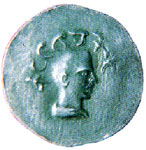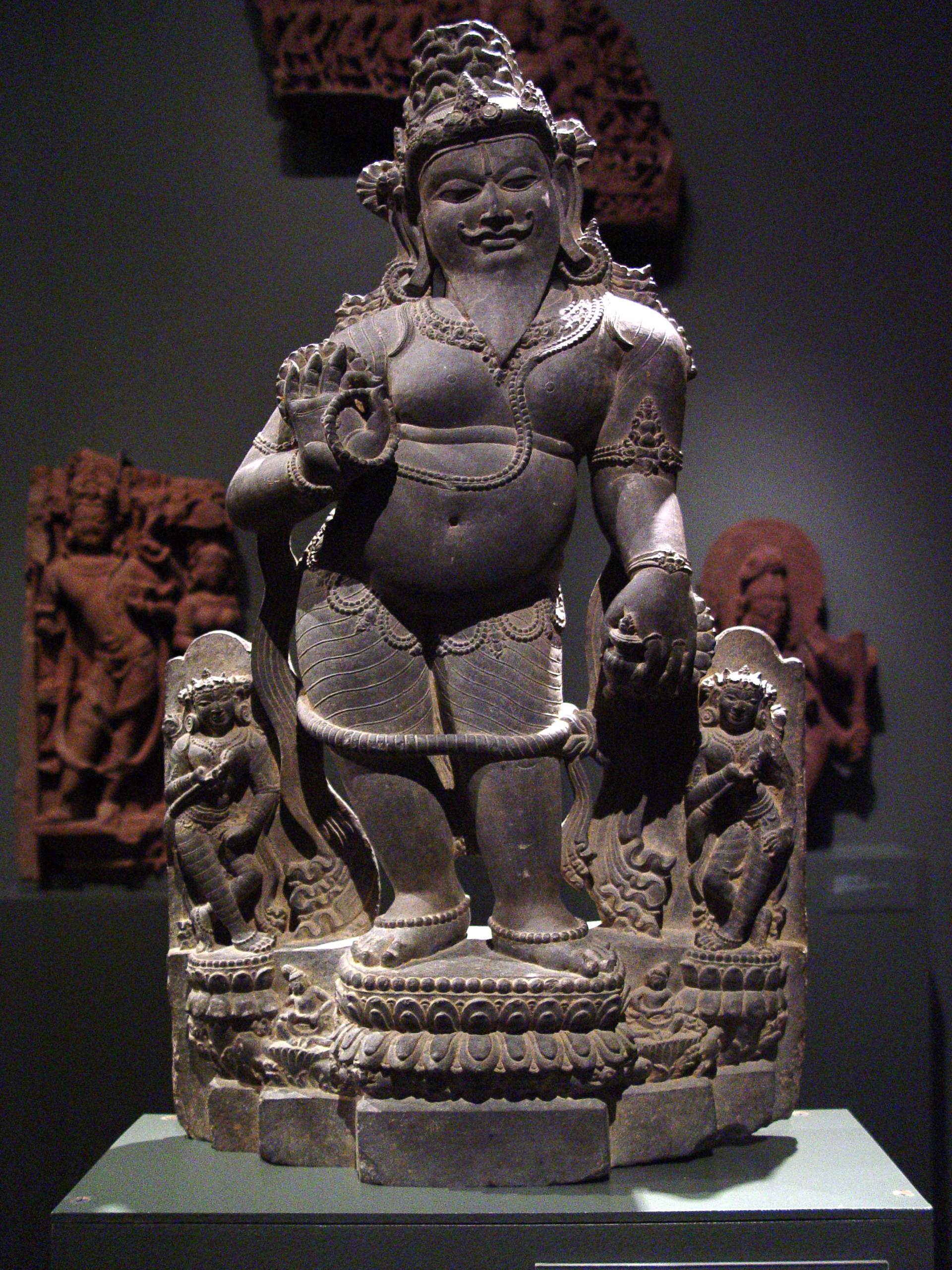|
Namboodiri
The Nambudiri (), also transliterated as Nampoothiri, Nambūdiri, Namboodiri, Namboothiri, Namboodri, Namboori, and Nampūtiri, are a Malayali Brahmin caste, native to what is now the state of Kerala, India, where they constituted part of the traditional feudal elite. Headed by the Azhvanchery Thamprakkal Samrāṭ, the Nambudiris were the highest ranking caste in Kerala. They owned a large portion of the land in the region of Malabar District, and together with the Nair monarchs of Kerala, the Nambudiris formed the landed aristocracy known as the Jenmimar, until the Kerala Land Reforms starting in 1957. The Nambudiris have traditionally lived in ancestral homes known as Illams and have been described by anthropologist Joan Mencher as, "A wealthy, aristocratic landed caste of the highest ritual and secular rank." Venerated as the carriers of the Sanskrit language and ancient Vedic culture, the Nambudiris held more power and authority than the kings and were "above and o ... [...More Info...] [...Related Items...] OR: [Wikipedia] [Google] [Baidu] |
Illam
Illam (), also referred to as Mana, is the Malayalam word for the house of a Namboodiri Brahmin. In the traditional lineage system used for the classification and identification of homes based on the castes of Kerala, South India, an Illam served as the ''Tharavad'' (ancestral house) of Nambudiri Brahmin families. Illam also refers to the house of a elite Nair and Amabalavasi in certain regions of Kerala. The Namboodiris, who constituted the highest ranking caste of Kerala, also refer to their lineages as the ''Brahmaalayam''. The family homes are built according to the canons of '' Vaasthusaasthram'', meaning "architecture" in the Sanskrit language. Very few ''illams'' continue to be used for dwelling, while most have been morphed into museums, ayurvedic health care centres and home stays in the struggle for survival. Structural layout The traditional layout of a Namboodiri Illam is in the form of an open courtyard which is located in the middle, known as the ''Nadumut ... [...More Info...] [...Related Items...] OR: [Wikipedia] [Google] [Baidu] |
Nambudiri
The Nambudiri (), also transliterated as Nampoothiri, Nambūdiri, Namboodiri, Namboothiri, Namboodri, Namboori, and Nampūtiri, are a Malayali Brahmin caste, native to what is now the state of Kerala, India, where they constituted part of the traditional feudal elite. Headed by the Azhvanchery Thamprakkal , Azhvanchery Thamprakkal Samrāṭ, the Nambudiris were the highest ranking caste in Kerala. They owned a large portion of the land in the region of Malabar District, and together with the Nair monarchs of Kerala, the Nambudiris formed the landed aristocracy known as the Jenmimar, until the Land reform in Kerala, Kerala Land Reforms starting in 1957. The Nambudiris have traditionally lived in Tharavad, ancestral homes known as Illams and have been described by anthropologist Joan Mencher as, "A wealthy, aristocratic landed caste of the highest ritual and secular rank." Venerated as the carriers of the Sanskrit language and ancient Vedas, Vedic culture, the Nambudiris held m ... [...More Info...] [...Related Items...] OR: [Wikipedia] [Google] [Baidu] |
Malabar District
Malabar District, also known as British Malabar or simply Malabar was an administrative district on the southwestern Malabar Coast of Bombay Presidency (1792–1800), Madras Presidency (1800–1950) and finally, Madras State (1950–1956) in India. It was the most populous and the third-largest district in the erstwhile Madras State. The historic town of Kozhikode was the administrative headquarters of this district. The district included the present-day districts of Kannur district, Kannur, Kozhikode district, Kozhikode, Wayanad, Malappuram district, Malappuram, Palakkad district, Palakkad (excluding Chittur-Thathamangalam, Chittur taluk), Chavakad, Chavakad Taluk and parts of Kodungallur, Kodungallur Taluk of Thrissur district (former part of Ponnani Taluk), and Fort Kochi area of Ernakulam district in the northern and central parts of present Kerala state, the Lakshadweep, Lakshadweep Islands, and a major portion of the Nilgiris district in modern-day Tamil Nadu. The detach ... [...More Info...] [...Related Items...] OR: [Wikipedia] [Google] [Baidu] |
Azhvanchery Thamprakkal
Azhvanchery Thamprakkal or Azhvanchery Samrāṭ () is the title of the senior-most male member of the Nambudiri Brahmin feudal lords of Azhvanchery Mana in Athavanad, Kerala, South India. They had the right over Guruvayur, and were the titular head of all Nambudiri Brahmins of Kerala. The Lord of Azhvanchery based at Athavanad and the Lord of Kalpakanchery based at neighbouring Kalpakanchery were usually present at the coronation (''Ariyittu Vazhcha'') of a new Zamorin of Kozhikode. Kalpakanchery Thamprakkals were related to the Nambudiris of Panniyoor while Azhvanchery Thamprakkals to those of Chowwara. History There are lots of theories as to how Nambudiri Brahmins came to settle in Kerala, the commonly accepted point of view is that they moved in from North India via Tulu Nadu or Karnataka. Another theory based on the retention of ''Mahabharata'' types as memorized by different Brahmin communities points to Tamil Nadu as the base from which they migrated to Kerala via t ... [...More Info...] [...Related Items...] OR: [Wikipedia] [Google] [Baidu] |
Cherusseri Namboothiri
Cherusseri Namboothiri was a 15th-century Malayalam poet who belonged to Kolathunadu, in present-day North Malabar region of Kerala. He was a court poet of Udaya Varma (1446–1475) and the author of '' Krishna Gadha'', a poem which is considered a landmark in the development of Malayalam literature. Cherusseri Namboothiri is believed to have lived between 1375 and 1475 CE. He was born in Kanathoor village in Kolathunadu or Kolaththiri Desam (now in Vadakara, Kozhikode district, Kerala). Several scholars like P. K. Narayana Pillai and P. Govinda Pillai hold the view that Cherusseri was the name of the Namboothiri's ancestral house (''Illam''). However, according to T. K. Balakrishnan Nair, there were 12 ''cheris'' in Kolathnadu and the smallest of them was called ''Cheru-Cheri'' (''Cheru''-small; ''Cheri''-an extent of a place) which has finally taken the form of Cherusseri. There aren't many details recorded in history about the life of this poet. There is some dispute about t ... [...More Info...] [...Related Items...] OR: [Wikipedia] [Google] [Baidu] |
Chera Dynasty
The Chera dynasty ( or Cēra, ), also known as Keralaputra, from the early historic or the Sangam period in Tamil-speaking southern India, ruled over parts of present-day states Kerala and Tamil Nadu. The Cheras, known as one of the mu-ventar (the Three Crowned Kings) of Tamilakam (the Tamil Country) alongside the Cholas and Pandyas, have been documented as early as the third century BCE. The Chera country was geographically well placed at the tip of the Indian peninsula to profit from maritime trade via the extensive Indian Ocean networks. Exchange of spices, especially black pepper, with Middle Eastern or Graeco-Roman merchants is attested to in several sources. Chera influence extended over central Kerala and western Tamil Nadu until the end of the early historic period in southern India. The Cheras of the early historical period (c. second century BCE – c. third/fifth century CE) had their capital in interior Tamil country ( Vanchi-Karur, Kongu Nadu), and ports/capit ... [...More Info...] [...Related Items...] OR: [Wikipedia] [Google] [Baidu] |
Sangam Period
The Sangam literature ( Tamil: சங்க இலக்கியம், ''caṅka ilakkiyam''), historically known as 'the poetry of the noble ones' ( Tamil: சான்றோர் செய்யுள், ''Cāṉṟōr ceyyuḷ''), connotes the early classical Tamil literature and is the earliest known literature of South India. The Tamil tradition links it to legendary literary gatherings around Madurai in the ancient Pandya kingdom. It is generally accepted by most scholars that the historical Sangam literature era, also known as the Sangam period, spanned from 100 BCE to 250 CE, on the basis of linguistic, epigraphic, archaeological, numismatic and historical data; though some scholars give a broader range of 300 BCE to 300 CE. The Eighteen Greater Texts (Patiṉeṇmēlkaṇakku), along with the Tamil grammar work Tolkappiyam, are collectively considered as Sangam literature. These texts are classified into the Ettuttokai (Eight Anthologies) and Pattupattu (T ... [...More Info...] [...Related Items...] OR: [Wikipedia] [Google] [Baidu] |
Brahmin
Brahmin (; ) is a ''Varna (Hinduism), varna'' (theoretical social classes) within Hindu society. The other three varnas are the ''Kshatriya'' (rulers and warriors), ''Vaishya'' (traders, merchants, and farmers), and ''Shudra'' (labourers). The traditional occupation of Brahmins is that of priesthood (purohit, pandit, or pujari) at Hindu temples or at socio-religious ceremonies, and the performing of rite of passage rituals, such as solemnising a wedding with hymns and prayers.James Lochtefeld (2002), Brahmin, The Illustrated Encyclopedia of Hinduism, Vol. 1: A–M, Rosen Publishing, , page 125 Traditionally, Brahmins are accorded the supreme ritual status of the four social classes, and they also served as spiritual teachers (guru or acharya). In practice, Indian texts suggest that some Brahmins historically also became agriculturalists, warriors, traders, and had also held other occupations in the Indian subcontinent.GS Ghurye (1969), Caste and Race in India, Popular Prakasha ... [...More Info...] [...Related Items...] OR: [Wikipedia] [Google] [Baidu] |
Kalabhra Dynasty
The Kalabhra dynasty (also called Kaḷabrar, Kaḷappirar, Kallupura or Kalvar) were rulers of all or parts of Tamil region sometime between the 3rd century and 6th century CE, after the ancient dynasties of the early Cholas, the early Pandyas and Chera. Information about the origin and reign of the Kalabhras is uncertain and scarce. It is believed that they were once the feudatories of the Cholas and the Pallavas. Their era is generally called "The Augustan age of Tamil Literature" in a 1922 book by the name "Studies in South Indian Jainism" written by M. S. Ramaswami Ayyangar and B. Seshagiri Rao. The Kalabhra era is sometimes referred to as the " dark period" of Tamil history, and information about it is generally inferred from any mentions in the literature and inscriptions that are dated many centuries after their era ended. Historian Upinder Singh states that Shivaskandavarman rise in the 4th century, as evidenced by inscriptions, show Kalabhras were not in power a ... [...More Info...] [...Related Items...] OR: [Wikipedia] [Google] [Baidu] |
Tamil Nadu
Tamil Nadu (; , TN) is the southernmost States and union territories of India, state of India. The List of states and union territories of India by area, tenth largest Indian state by area and the List of states and union territories of India by population, sixth largest by population, Tamil Nadu is the home of the Tamil people, who speak the Tamil language—the state's official language and one of the longest surviving Classical languages of India, classical languages of the world. The capital and largest city is Chennai. Located on the south-eastern coast of the Indian peninsula, Tamil Nadu is straddled by the Western Ghats and Deccan Plateau in the west, the Eastern Ghats in the north, the Eastern Coastal Plains lining the Bay of Bengal in the east, the Gulf of Mannar and the Palk Strait to the south-east, the Laccadive Sea at the southern Cape (geography), cape of the peninsula, with the river Kaveri bisecting the state. Politically, Tamil Nadu is bound by the Indian sta ... [...More Info...] [...Related Items...] OR: [Wikipedia] [Google] [Baidu] |
Avatar
Avatar (, ; ) is a concept within Hinduism that in Sanskrit literally means . It signifies the material appearance or incarnation of a powerful deity, or spirit on Earth. The relative verb to "alight, to make one's appearance" is sometimes used to refer to any guru or revered human being. The word ''avatar'' does not appear in the Vedic literature; however, it appears in developed forms in post-Vedic literature, and as a noun particularly in the Puranic literature after the 6th century CE. Despite that, the concept of an avatar is compatible with the content of the Vedic literature like the Upanishads as it is symbolic imagery of the Saguna Brahman concept in the philosophy of Hinduism. The ''Rigveda'' describes Indra as endowed with a mysterious power of assuming any form at will. The ''Bhagavad Gita'' expounds the doctrine of Avatara but with terms other than ''avatar''. Theologically, the term is most often associated with the Hindu god Vishnu, though the idea has been ... [...More Info...] [...Related Items...] OR: [Wikipedia] [Google] [Baidu] |






